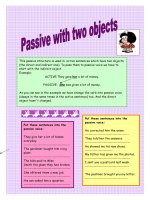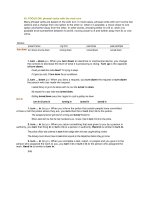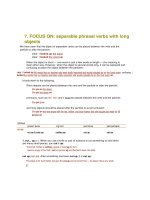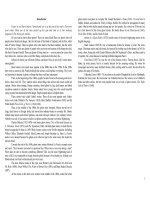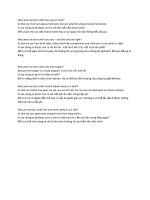Verbs with two objects
Bạn đang xem bản rút gọn của tài liệu. Xem và tải ngay bản đầy đủ của tài liệu tại đây (12.97 KB, 1 trang )
Verbs with two objects
Many verbs can be followed by two objects – one indirect and one direct object. The indirect object usually refers
to a person, and comes first.
I gave him a watch for his birthday.
Could you send me the report?
I will lend you some money.
Let me get you some coffee.
She told me a story.
Certain verbs cannot be followed by the structure
indirect object + direct object
. Examples are:
explain,
suggest
or
describe.
I would like you to
explain this theory to me
. (NOT I would like you to explain me this theory.)
Can you
suggest a good cardiologist to me
? (NOT Can you suggest me a good cardiologist?)
Please
describe your job to me
. (NOT Please describe me your job.)
Some verbs can be followed by either a direct object or an indirect object, or both.
I asked Peter. (Here the verb asked is followed by an indirect object.)
I asked a question. (Here the verb asked is followed by a direct object.)
I asked Peter a question. (Here the verb asked is followed by both a direct object and an indirect object.)
Other verbs that can be used like this are:
teach, tell, pay, show, sing, play
and
write
.
He taught
me a lesson.
When the verbs
sing, play
and
write
have no direct object, we put the preposition
to
before the indirect object.
Compare:
Write
me a letter
. (NOT Write to me a letter.) (To is not used when write is followed by a direct object.)
Write
to me.
(NOT Write me.) (Here we use the preposition to because the verb write is not followed by a
direct object.)
Be first to know when grammar rules change! Sign up to our newsletter here: englishgrammar.org (It's free)
Powered by TCPDF (www.tcpdf.org)
